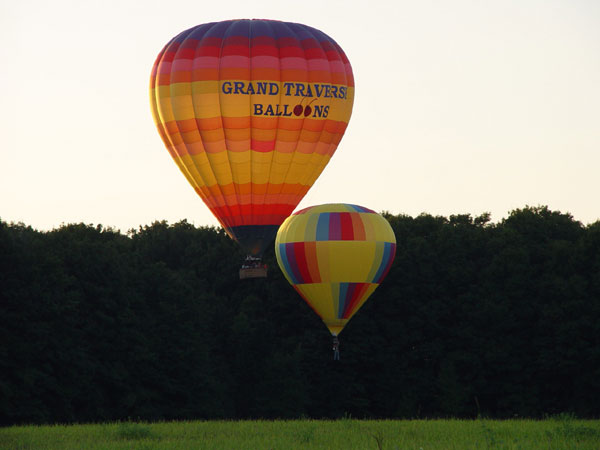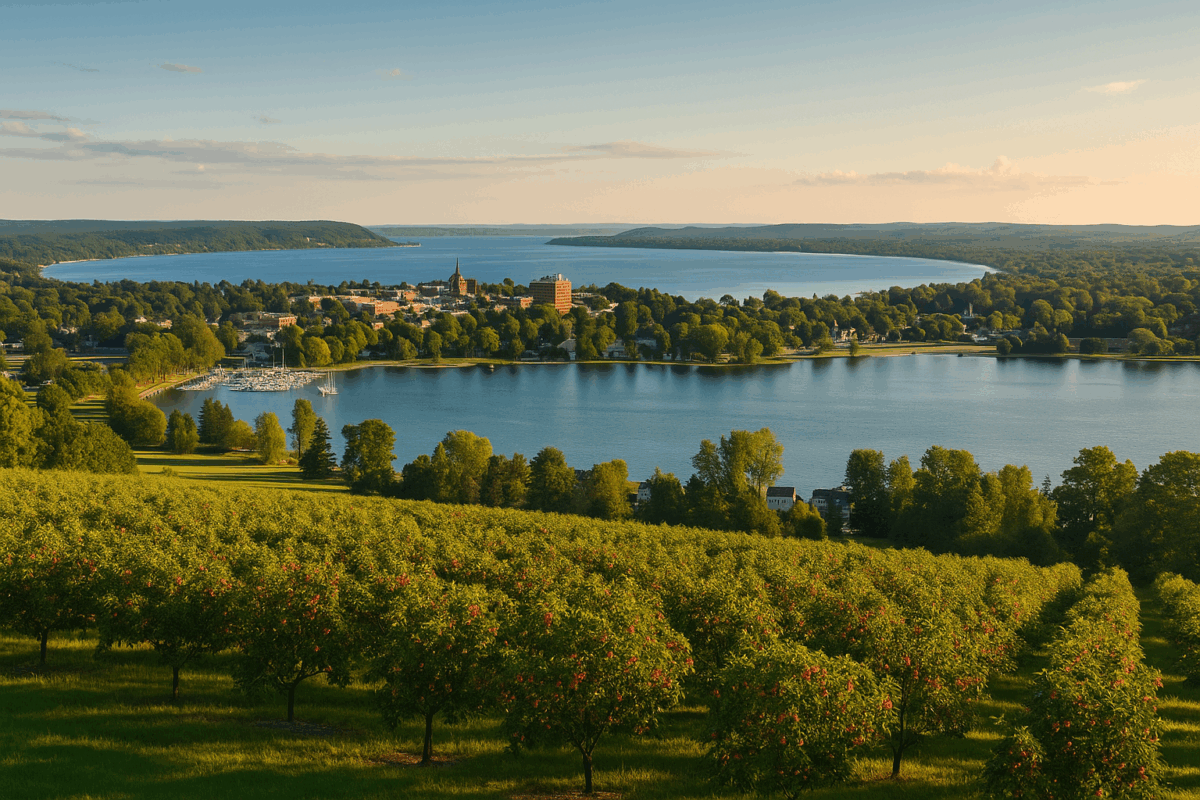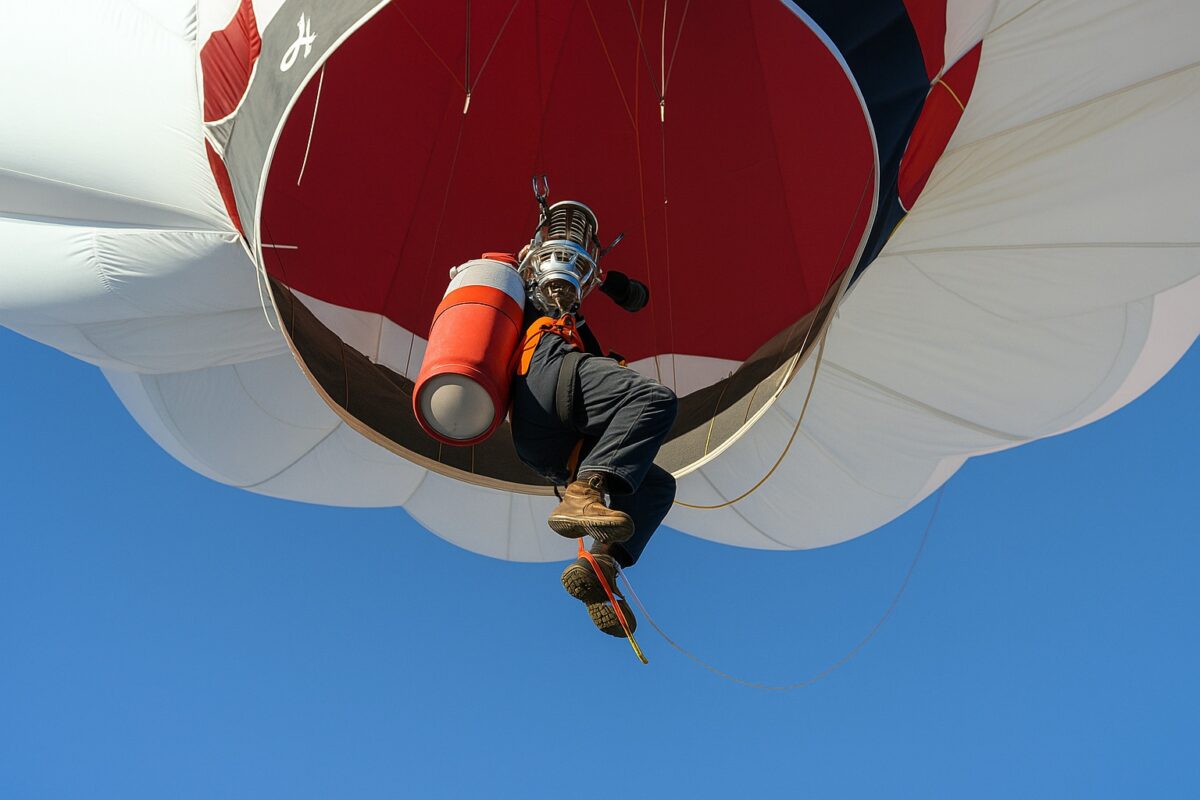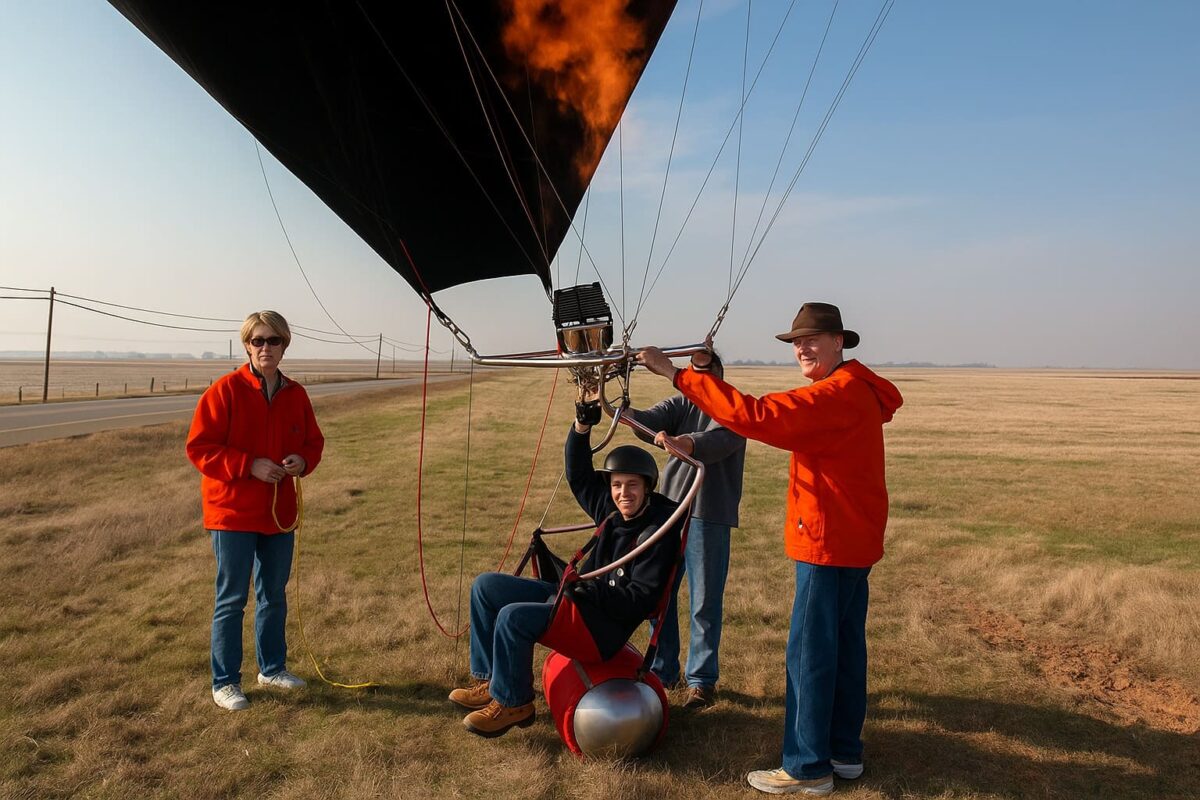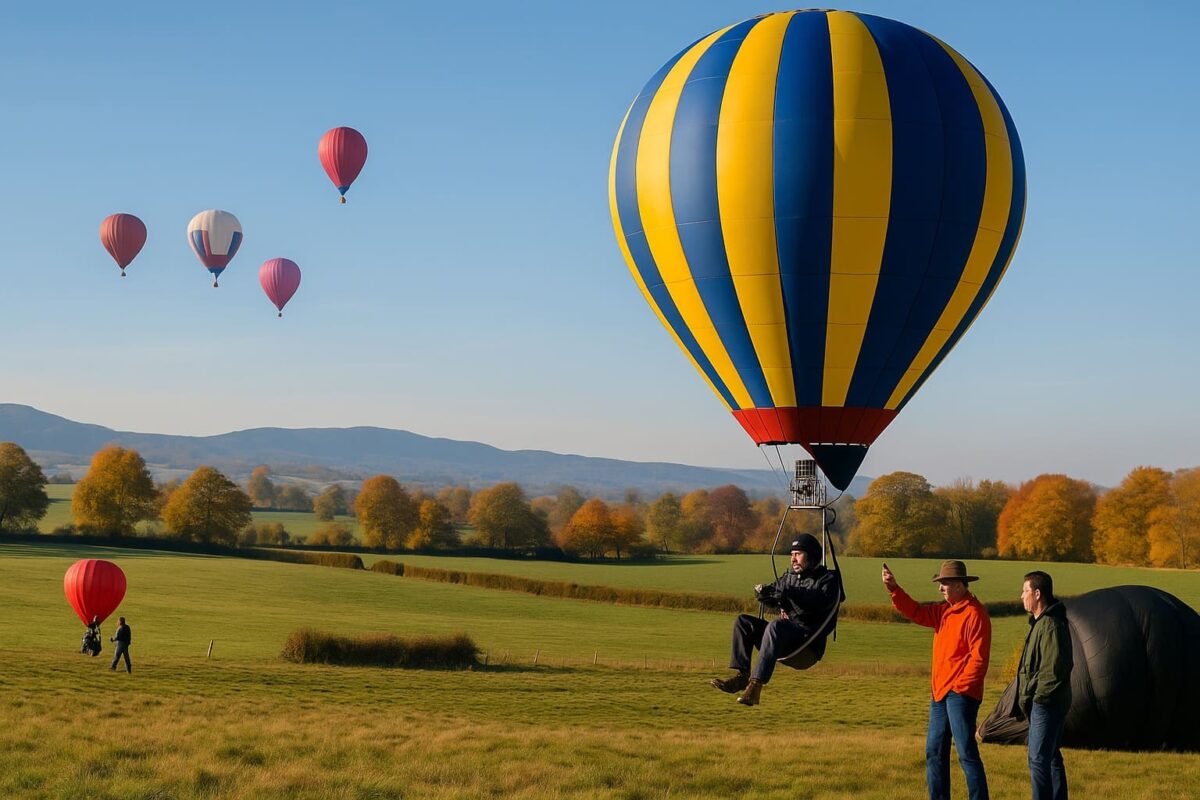Traverse City lies in the northwestern part of Michigan’s Lower Peninsula, positioned between the tips of the “pinky” and “ring finger” if the state is viewed as a hand, a common local analogy. The city sits four to five hours northwest of Detroit and is reached by highways that cross long stretches of open farmland and forest. Along the route, radio stations fade one by one until only static remains, leaving travelers with a single fading talk show before silence sets in.
At the end of this quiet drive, Traverse City offers a bright and welcoming atmosphere. The community rests between two bays that open onto Lake Michigan, giving it scenic water views and a maritime charm. Surrounding cherry orchards contribute to its nickname, the “Cherry Capital.” In summer, the city attracts tourists to its beaches and lakefronts, while in winter, residents claim to ski on the gentle hills nearby — though some view this as part of the region’s characteristic humor and self-description.
Local Ballooning Community
In August 2003, balloonists Ernie Hartt and a fellow pilot traveled to Traverse City to meet Jeff Geiger, operator of Grand Traverse Balloons, the area’s primary ballooning company. Geiger, formerly based in San Diego, shared stories from his earlier flying experiences and discussed the close-knit nature of the ballooning community, where pilots frequently cross paths at different events around the country.
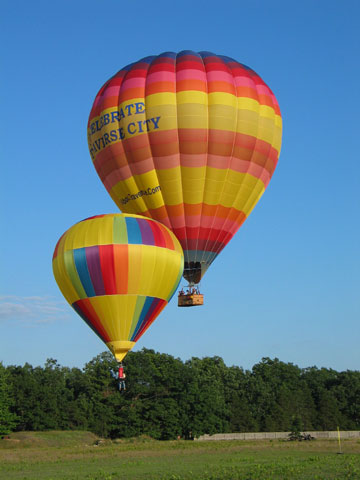
That afternoon, Geiger prepared to take passengers on a scheduled flight, and the visiting pilots accompanied him to one of his regular launch sites, an open field situated behind a miniature golf and water-slide complex. The area provided a convenient, open launch space with clear air currents over the countryside.
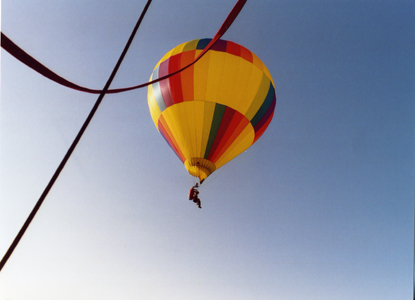
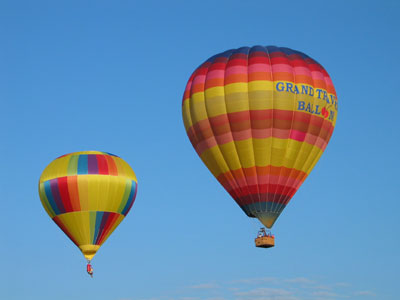
Flight Conditions and Route
Winds were steady, and launch conditions were favorable. The balloons ascended smoothly and gained altitude to reduce forward speed. A light haze covered the sky, and the route followed a path south of the bay and town. From above, numerous small lakes dotted the landscape, offering striking views of northern Michigan’s geography.
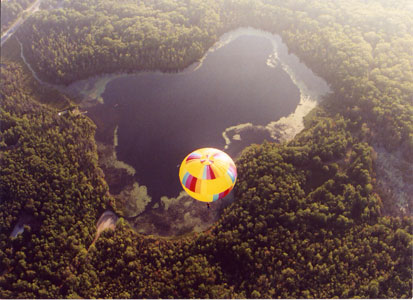

After some time aloft, the pilots descended to lower altitudes, drifting eastward over rural terrain. The air currents carried the balloons at different speeds, and the group separated by roughly half a mile. Over the radio, Geiger directed the other pilot toward a large stand of trees with an open field beyond — a suitable landing site.
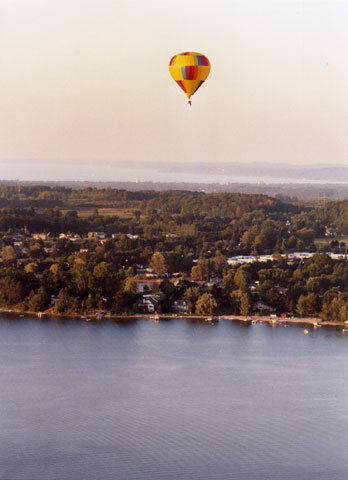
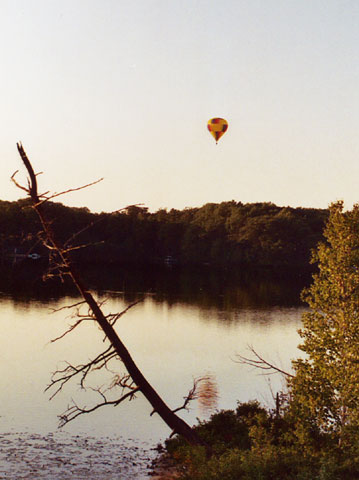
Landing and Recovery
Staying low, the second balloon continued eastward while Geiger gained altitude to adjust position northward toward the same target. The chase crews tracked both balloons from nearby roads, positioning vehicles in the open field for recovery.
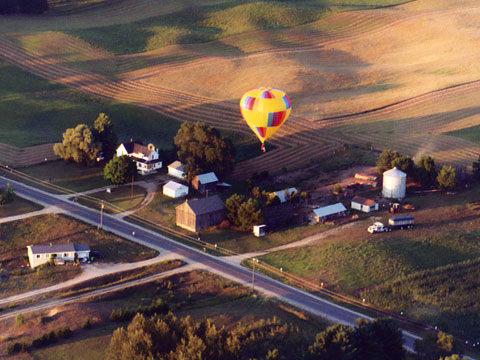
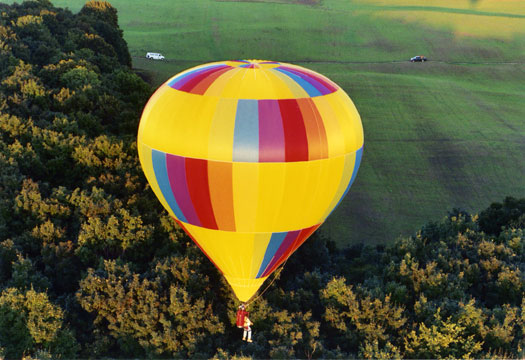
Geiger descended first, landing smoothly near the tree line. The second balloon followed moments later, entering the same field. Both pilots completed their landings safely, and recovery teams moved in quickly to secure the envelopes.
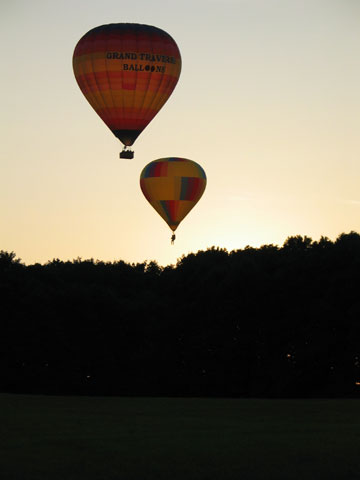
The final approach brought the two balloons side by side, concluding the flight with a coordinated landing. The recovery crew secured equipment efficiently, marking the end of another successful flight over northern Michigan’s scenic countryside.
